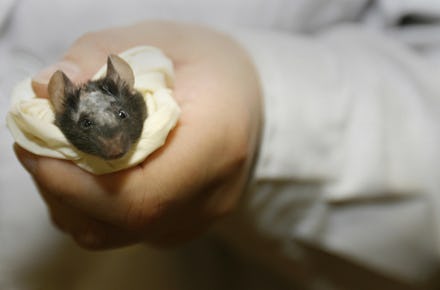Scientists Might Have Just Put an Image Directly Into a Mouse’s Brain

Researchers might have just left a little memento in a mouse noggin. But what it is ... they aren't quite sure.
According to Columbia University's Data Science Institute, neuroscientists "may have implanted an image completely unfamiliar to the mouse." They're now in the process of trying to prove this with a behavioral study.
If the neuroscientists can prove that they did in fact achieve an act of inception in the mouse, this method could offer people with epilepsy and other brain disorders a way to "restore normal connection patterns" in their brains, psychiatry professor at Columbia University Medical Center Dr. Daniel Javitt told the Data Science Institute.
How did it happen? The researchers did so using optogenetics — a non-invasive technique, using light to control neurons. "They injected the mouse with a virus containing light-sensitive proteins engineered to reach specific brain cells," Data Science Institute reported. "Once inside a cell, the proteins allowed researchers to remotely activate the neuron with light, as if switching on a TV."
This lightbulb moment for the neuroscientists proved that the artificially created and implanted neural ensemble may have been the root of the image (that may or may not exist).
"If you told me a year ago we could stimulate 20 neurons in a mouse brain of 100 million neurons and alter their behavior, I'd say no way," Rafael Yuste, a neuroscience professor at Columbia University, told Data Science Institute. "It's like reconfiguring three grains of sand at the beach."
The question remains: Just what was it that the mouse could have seen? Was it a picture of a world where all lab mice ran free? Was it cheese?